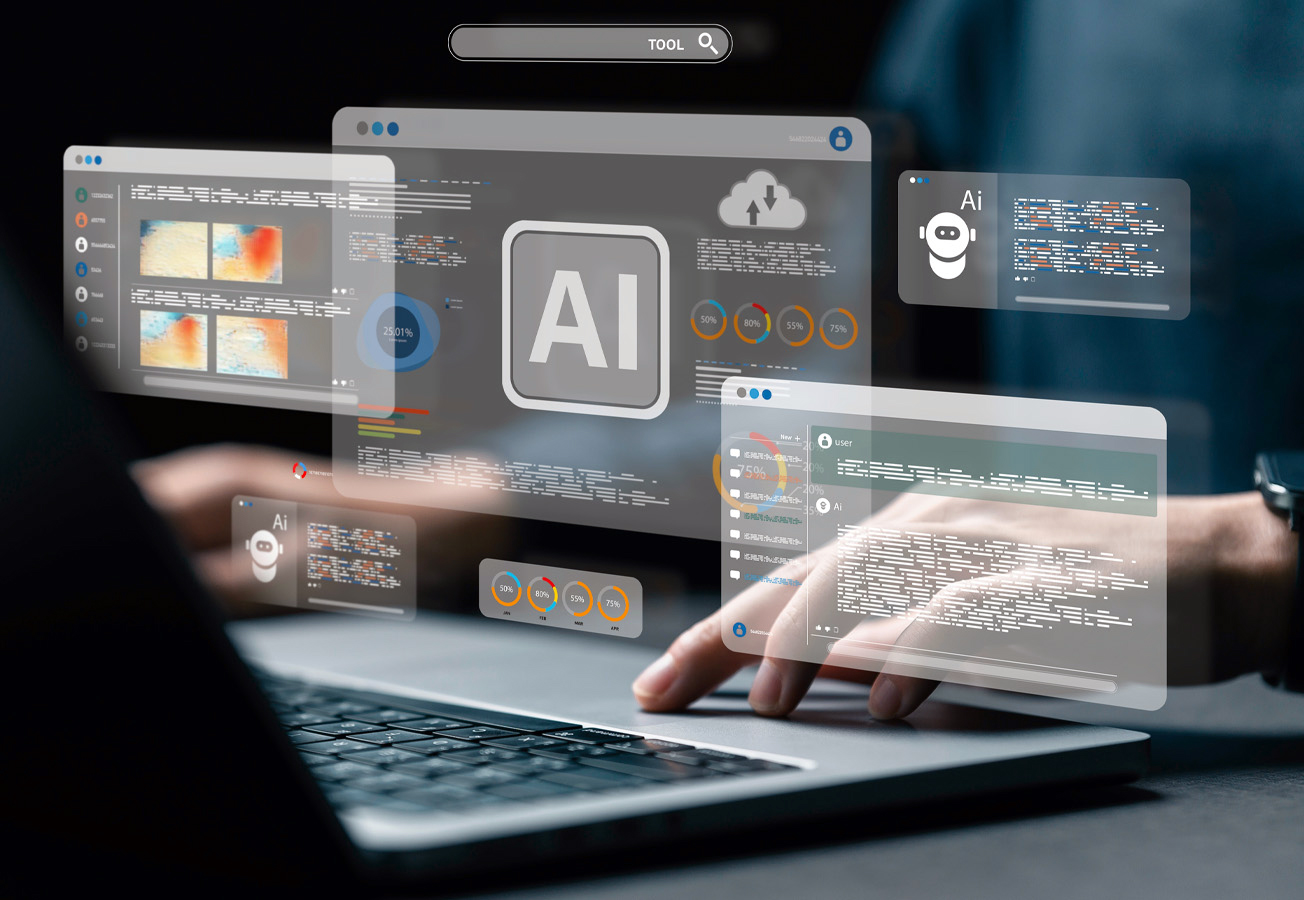open share hyperlinks
shut share hyperlinks
As synthetic intelligence matures and expands inside enterprises, leaders throughout industries are struggling to get everybody on board. At the identical time, they need to handle buyer and worker relationships amid shifting expectations in an period of digital transformation.
The newest ideas from MIT Sloan Management Review think about the best way to overcome the boundaries of AI implementation and go all in on placing AI instruments into manufacturing. Leaders will even discover ways to know what clients need, the best way to keep away from a poisonous office, and the best way to run efficient brainstorming periods.
Overcome 3 frequent boundaries to utilizing AI instruments
AI-powered decision-making instruments have the potential to extend effectivity, enhance service high quality, cut back prices, and enhance income. But this solely occurs if staff use the instruments. Often, they don’t.
AI initiatives face resistance from front-line staff in industries ranging from well being care to retail, MIT Sloan professorKate Kellogg writes, together with co-authors Mark Sendak and Suresh Balu. This resistance usually stems from three conflicts of curiosity amongst AI builders, company management, and finish customers. A extra holistic method to implementation can break by way of these boundaries.
Problem 1: AI instruments profit the group, not the tip person. This is frequent when organizations use predictive analytics to extend worth downstream, because it forces finish customers to enter information or make choices unrelated to their position. To deal with this, AI builders ought to concentrate on issues that finish customers face in their very own day-to-day work, whereas managers ought to provide tangible incentives for utilizing the instruments.
Problem 2: Tools require further end-user labor. Increased engagement with AI instruments, particularly these exterior staff’ typical expertise workflows, solely makes the job more durable. Tools that may automate information retrieval, testing, and validation, and that may present perception throughout the purposes that staff already use, ought to reduce the affect on end-user workload.
Problem 3: Tools curtail end-user autonomy. (*5*) instruments that provide evidence-based choice help — and monitor whether or not somebody accepts these suggestions — infringe on finish customers’ intuitive judgments. AI instruments ought to help finish customers in making choices whereas leaving the “ultimate name” to them. Understanding this give and take requires finish person involvement early within the improvement life cycle.
Read: AI on the Front Lines
Know the 5 traits of an ‘AI powerhouse’ firm
Nearly two-thirds of enterprises have but to see worth from their AI investments, and 45% understand AI as a threat to their enterprise not directly. That’s as a result of these corporations are usually dabbling with AI and have but to place their AI instruments into manufacturing, write Thomas H. Davenport, a visiting scholar on the MIT Initiative on the Digital Economy, and Randy Bean, CEO of NewVantage Partners.
Mastercard isn’t a kind of firms. Support for AI begins with CEO Michael Miebach and has been constructed by way of a mix of acquisition and inside expertise improvement. The instance of Mastercard, a self-described “AI powerhouse,” suggests there are 5 pillars of an organization that’s all in on AI:
Powering merchandise and companies. Mastercard began with fraud detection however plans to use AI to all parts of the fee cycle.
Powering inside enterprise operations. Predictive purposes help processes ranging from enterprise forecasting (with 99% accuracy) to server upkeep.
Supporting clients. Mastercard works with company clients to establish their very own use circumstances for AI — and to create a proof of idea in as little as six weeks.
Pursuing AI for good. The firm is working AI initiatives concentrating on group improvement, microfinance, and constructing information science expertise in underserved areas.
Prioritizing moral AI. In its AI improvement efforts, Mastercard emphasizes clients’ possession of, management over, and potential to learn from their very own information.
Read: Becoming an ‘AI powerhouse’ means going all in
Rethink these assumptions about what clients need
Assumptions can steer enterprise leaders towards helpful choices and align stakeholders on frequent viewpoints, MIT Sloan principal analysis scientistGeorge Westerman defined in a latest webinar. However, assumptions additionally reinforce unconscious bias and display screen out improvements that go towards the grain. In an ever-changing world, firms have to rethink these 5 frequent assumptions about buyer expectations.
Customers worth the human contact. Many clients truly favor self-service and imagine {that a} human slows down the interplay.
In-person experiences are higher than digital. The digital expertise lets firms attain a worldwide viewers whereas providing higher comfort at a decrease price.
People received’t pay full value for digital. People pay for worth, and comfort is a crucial a part of that worth. By offering comfort, digital can present important worth.
Pandemic-era service restrictions are solely non permanent. It seems that sure companies in the reduction of throughout the pandemic, reminiscent of each day turndowns in lodge rooms, could also be overvalued.
The previous manner was the proper manner. Traditional enterprise fashions not solely predate the pandemic; they could predate the smartphone, the Internet, and even the phone.
As enterprise leaders problem these assumptions, these are the questions they need to have in mind:
Who’s the human salesperson serving to — the client, or our inefficient and outdated inside processes?
How will we optimize in-person and digital interactions for purchasers, not simply ourselves?
How do preferences fluctuate by buyer segments?
When is digital higher — and can we cost extra, not much less, for it?
How a lot did clients actually need the companies we in the reduction of throughout the pandemic?
Watch: Rethinking buyer expectations for 2022 and past
Avoid the 5 attributes of a poisonous company tradition
Many traits of an organization can contribute to a foul tradition, however there’s a distinction between parts of tradition which are irritating or disappointing and these which are actually poisonous. In a examine of greater than 1.3 million Glassdoor opinions, MIT Sloan senior lecturerDonald Sull and his co-authors recognized 5 frequent attributes of a poisonous company tradition. These are the traits which have the biggest adverse affect on how workers fee company tradition.
Noninclusive illustration of workers by gender, race, sexual id and orientation, incapacity, and age — coupled with a tradition of cronyism and basic unwritten favoritism.
Disrespectful remedy of workers as proven in a scarcity of consideration, courtesy, and dignity for others.
Unethical and dishonest habits — or, worse, failure to adjust to relevant state and federal laws.
Cutthroat work environments by which colleagues actively undermine one another.
Abusive administration that brazenly bullies, condescends, or talks all the way down to workers.
A poisonous company tradition comes at a excessive price. Companies discover it more durable to each appeal to and retain expertise, whereas workers who stay on workers are much less productive and extra prone to undergo from a persistent illness. And nobody is immune: Even firms with excessive rankings for company tradition are prone to comprise “pockets of cultural toxicity” with enterprise items, job features, or geographies.
Read: Why each chief wants to fret about poisonous tradition
Bring constructive criticism to the artistic course of
The main floor rule for brainstorming periods — no criticism — dates to the late Nineteen Forties. But latest analysis suggests constructive criticism can encourage further creativity and creativeness. The key, in accordance with MIT Sloan affiliate professorJared R. Curhan, is knowing the context of the brainstorming train.
In a cooperative context the place the objectives of group members are aligned, criticism can stimulate creativity. In a extra aggressive session — one the place members are inspired to prioritize ideas, for instance, or one the place teams fall squarely into two camps, reminiscent of staff and managers —criticism is extra prone to set off battle.
Before conducting a brainstorming session, leaders want to grasp the dynamics of the groups coming collectively. If battle is probably going, organizations might go for one session that features free-flowing ideas coupled with criticism, then observe that up with a session for reviewing ideas. In such a setup, staff members are much less prone to edit their ideas — and the artistic course of is much less prone to be undermined.
Read: Improve artistic brainstorming with constructive criticism
https://mitsloan.mit.edu/ideas-made-to-matter/implementing-ai-and-managing-relationships-5-ideas-mit-sloan-management-review




